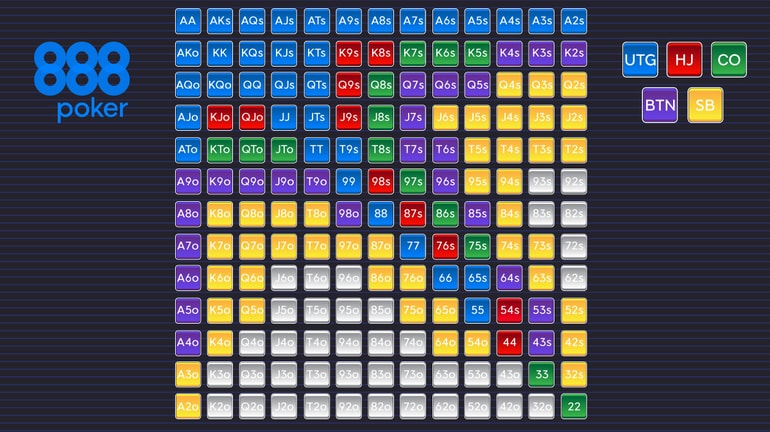Good Poker Hands Before Flop
- Good Poker Hands Before Flop Dance
- Good Poker Hands Before Flop Gif
- Good Texas Hold'em Hands
- Poker Hands Before Flop
- Good Poker Hands Pre Flop
Ask a group of poker players for their opinion on which street is the easiest to play and I would be willing to bet good money that almost all of them will answer preflop.
Two queens, or “ladies” are a very good hand in poker. Yeah, kings and aces will beat you, but you will always have an upper hand over jacks, tens and below cards. While these hands are a great strength pre-flop but they are very difficult to play post-flop especially when some overcards hit the board. If you ever wanted to know some of the odds and probabilities of Texas hold'em poker, from the chances of flopping a flush (0.8%) or set (12%) to the odds of an overcard coming on the flop when. First and foremost, you should want to raise before the flop to get more value with your premium hands. This is a fundamental poker concept that should explain itself. If you think you have the best hand before the flop you want to try and build a bigger pot before you even see the flop, turn, and river. Let’s say you hold a hand like TT+, AQ+. Before the flop is where it all starts, where you are forced to make your first important decision depending on all of the variables involved with the hand. It is important to make good, solid decisions before the flop, as it will form the foundations for how the rest of the hand will be played out. If you make a high-quality decision before.
Good Poker Hands Before Flop Dance
When faced with a big bet before the flop, it can be tough to lay hands like 9 9 down especially when that set does happen to appear, but in the long run you’ll be far better off folding marginal pocket pairs to major aggression.
Generally speaking, preflop decisions are the easiest to make in no-limit hold’em, and not only for the fact there are no community cards to consider. Before the flop, all you need to think about is your hole cards, the action before you, and the players waiting to act after you. You don’t have to worry about flush draws, straight draws, or if anyone has a set. It’s just you, your hand, and the remaining opponents still with cards.
One of the problems of the situation being relatively “simple” creates, however, is that players tend not to give preflop decisions their full attention. Instead, they play a robotic style where “Hand X” is always a raise from “Position Y” because that’s what they have always done in the past and have seen others do, too.
Raising first-in from the cutoff or button is an area where people know they should be aggressive and be playing a much wider range of hands than they would elsewhere at the table. But often players are too loose with their starting hand requirements from these two late positions and then subsequently find themselves falling foul of that looseness after the flop.
If poker were played in a vacuum, it would be profitable to play 100% of your hands from the button, but poker isn’t played in a vacuum. While some players are happy to raise with a hand such as from the button because they think their hand is stronger than what the blinds are likely holding, they will instantly muck a hand such as because they think (correctly) that is a terrible hand postflop. But isn’t too far behind in the postflop rubbish scale, either.
Imagine we have on the button and we open for a raise because the blinds are likely to have hands with which they dislike calling raises out of position. Then that plan is ruined by the big blind’s call. The flop falls , the big blind checks, we make a continuation bet, and the big blind calls again. The turn is the and the big blind checks once more. Now what do we do?
If we check behind, then we will probably get to showdown with a weak hand and potentially lose the pot. We could bet, but the doesn’t look like a scary card, so we’re likely to be called again and have wasted more chips than we should have.
The fact is, neither option seems a good one. But the scenario could have been avoided by putting more thought into our preflop hand range and selecting a holding that would end up with better postflop equity.
Examples of hands that have good postflop equity include
- suited cards, particularly suited aces with which we can flop the nut flush or the nut flush draw and keep up our aggression;
- connected cards that can stay aggressive when they have a solid draw; and
- high cards that miss more flops than they hit, but having six outs to your overcards can often be enough to continue betting.
Think of how many combinations of suited cards, high cards, and connected cards there are and you will soon see that you can still be opening a lot of hands from the button — hands that have a good chance of having plenty of postflop equity once the first community cards come into view.
Good Poker Hands Before Flop Gif
Preflop play might be relatively “simple” in some respects, but that shouldn’t encourage you not to be mindful of what lies ahead after the flop when making that initial action.
Get all the latest PokerNews updates on your social media outlets. Follow us on Twitter and find us on both Facebook and Google+!
Good Texas Hold'em Hands

Poker Hands Before Flop

Good Poker Hands Pre Flop
Tags
cash game strategytournament strategystarting hand selectionno-limit hold'em



